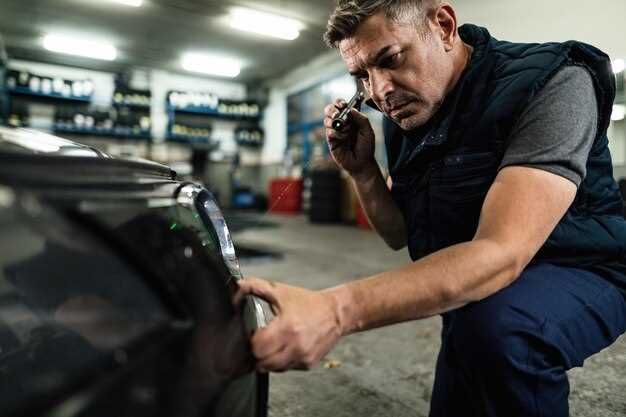
Understanding the typical duration of collision repair is essential for vehicle owners seeking to regain the functionality and aesthetic appeal of their cars. When involved in an accident, many factors can influence the overall timeline of repair work, including the extent of the damage, the make and model of the vehicle, and the availability of parts. Each of these elements plays a critical role in determining how long your vehicle will be off the road.
Collision repair encompasses a variety of services, from minor dent removal to extensive structural repairs. Accurate time estimates depend largely on the specific type of damage incurred. For instance, repairs that primarily involve bodywork, such as scratch removal or dent pulling, may take significantly less time compared to repairs that include frame straightening or the replacement of major components.
Moreover, the choice of repair shop can also impact the length of the process. Specialized auto body shops may expedite repairs more efficiently, while shops that deal with a higher volume of claims may face delays due to resource allocation. Understanding these dynamics can help car owners set realistic expectations and plan accordingly for the downtime associated with collision repair.
Factors Influencing Repair Time in Auto Collision Cases

Several key factors can significantly influence the duration of repair work following an auto collision. Understanding these elements can help vehicle owners better anticipate the time required for their car to be restored.
One primary factor is the extent of the damage. Minor dents and scratches may require only a few hours for repairs, while major structural damage can take days or even weeks to address. Each type of damage necessitates different levels of skilled labor, tools, and parts, impacting the overall timeline.
The availability of replacement parts is another critical element. If a vehicle requires specific components that are not readily in stock at the repair facility, the waiting time may extend significantly. This issue is often exacerbated by the make and model of the vehicle, with some parts being harder to source than others.
The complexity of the repair process also plays a crucial role. For instance, modern vehicles equipped with advanced technology and safety features may require specialized knowledge and equipment for repairs. Technicians must often undergo additional training to handle these sophisticated systems, which can add time to the process.
Insurance processes can further complicate repair timelines. Delays in approvals or estimates from insurance companies may prolong the start of the repair work. In some cases, a thorough assessment is needed before repairs can commence, leading to additional waiting periods.
The repair shop’s workload and efficiency are also influential. A busy shop may experience longer turnaround times due to the volume of vehicles being serviced. Conversely, a well-organized facility with adequate staffing can streamline operations and expedite repairs.
Finally, unexpected issues can arise during the repair process. Once technicians begin work, they may discover additional damage or complications that were not initially visible. This can necessitate further repairs and extend the time required to complete the job adequately.
Estimating Repair Duration Based on Damage Severity

When assessing the time required for vehicle collision repair, understanding the severity of the damage is crucial. Repairs can range from minor fixes to extensive reconstruction, and the extent of the damage directly affects the duration of the repair process.
Minor damage, such as small dents, scratches, or paint chips, typically requires less time to repair. These types of issues can often be resolved within a few hours to a day, as they usually involve simple procedures like buffing, painting, or panel replacement. Technicians can efficiently address these repairs without extensive disassembly of vehicle components.
Moderate damage, which may include larger dents, damaged bumpers, or misalignment of panels, generally takes longer. Repairs in this category may require several days, as they involve more complex procedures, including part replacements and realignment. The technician may need to disassemble parts of the vehicle to access the affected areas, leading to a longer repair timeline.
Severe damage, such as frame damage or significant structural issues, presents the most extensive repair challenges. Repairs of this nature can take several weeks, as they often necessitate comprehensive assessments to determine the full extent of the damage. This process may involve frame straightening, extensive part replacements, and thorough inspections. Additionally, obtaining the necessary parts can prolong repair duration, especially if they are not readily available.
Factors such as the availability of parts, the complexity of the required repairs, and the specific methods employed by the repair shop also play significant roles in determining repair time. Each repair scenario is unique, making it essential for vehicle owners to receive a detailed assessment from a qualified technician to understand the expected duration based on the specific damage severity.
Understanding Parts Availability and Its Impact on Repair Timelines
Parts availability plays a crucial role in determining the duration of collision repair. When a vehicle is damaged, specific components must be replaced or repaired to restore it to its pre-accident condition. If the required parts are readily available, the repair process can proceed efficiently. However, delays often occur if parts need to be ordered, particularly if they are OEM (Original Equipment Manufacturer) parts that have to be sourced from the manufacturer.
Several factors contribute to parts availability. First, the make and model of the vehicle greatly influence how quickly parts can be obtained. Common vehicles typically have parts in stock, while less common or older models might require longer wait times due to limited availability. Additionally, the geographic location of the repair shop can impact access to certain parts. Shops situated in urban areas often have better access to inventory than those in rural regions.
Additionally, supply chain issues can lead to significant delays. Global factors such as manufacturing disruptions, transportation delays, and inventory shortages can affect when parts arrive at repair facilities. For instance, if a supplier experiences production halts, obtaining essential components can take several weeks or even months. This uncertainty can lead to prolonged repair timelines, impacting customer satisfaction and overall service quality.
Repair shops often utilize alternative solutions to mitigate delays caused by parts unavailability. This may include using aftermarket parts, which can be more readily accessible and sometimes less expensive. However, the quality and fit of these components may vary, and they may not always meet the same standards as OEM parts. Repairers must weigh the benefits of quicker repairs against the potential compromise on quality.
Communication with customers is vital during this process. Informing them of the status of parts availability and expected timelines helps manage their expectations and enhances their experience. Overall, understanding how parts availability impacts repair timelines is essential for both repair professionals and vehicle owners, as it directly influences the efficiency of the repair process.

